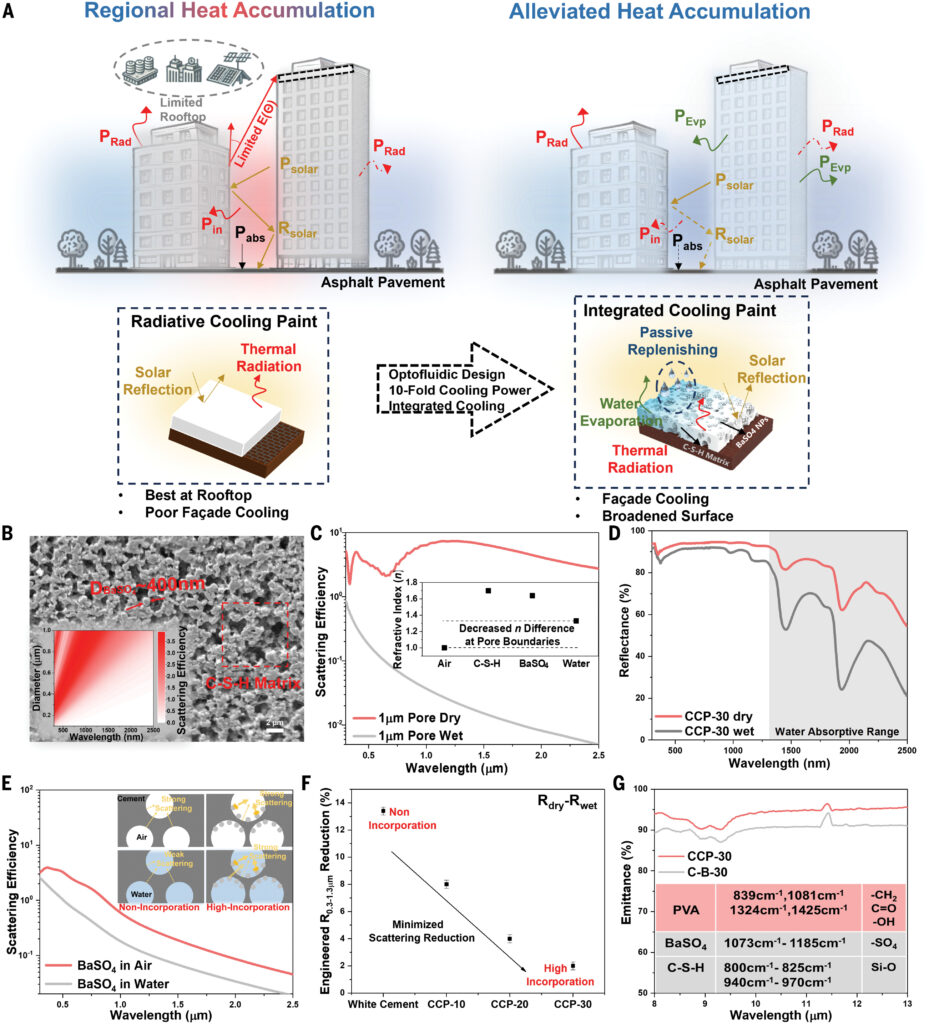This paint sweats to cool off buildings. No energy required.
The paint replenishes its water supply by absorbing rain and water vapor. Its porous structure holds the water and then slowly releases it much like sweat.
June 19, 2025

Ultra-bright white paints are the go-to when it comes to cooling buildings. Those paints work by reflecting as much of the sun as they can. An international team of researchers have now made a cement-based cooling paint that bests those white cooling paints.
The new paint reflects sunrays and emits heat as infrared radiation, which passes through the atmosphere straight into space in a phenomenon called passive radiative cooling. But what makes the paint unique is that it also releases water to achieve cooling via evaporation, much like human skin does.
This combination of multiple cooling mechanisms gives the paint super-cooling powers. In a pilot test in Singapore, one of the most humid cities in the world, the paint achieved up to 10 times higher cooling power than commercial cooling paints. This amounted to electricity savings of 30 to 40% compared with radiative cooling. The results are published in the journal Science. “This paint offers a practical and long-term solution for mitigating the urban heat island effect,” the researchers from China, Singapore, Saudi Arabia, the UK and US write.
Air-conditioning uses 7% of the world’s electricity. It has become one of the fastest-growing sources of building energy use in recent decades. Innovative passive cooling technologies that do not consume energy have become an urgent need to reduce carbon emissions. Passive cooling could have a big impact and save lives especially in developing countries, where power infrastructure might be lacking or air-conditioning isn’t affordable.
Radiative cooling done via paints, textiles and other materials has become a popular passive cooling technology. But it does not work well in humid places. That’s because water vapor in the air traps heat near the surface and prevents it from escaping into the atmosphere.
This ‘living paint’ traps carbon dioxide and produces oxygen
The researchers created a cement paste-like paint composed of a porous calcium silicate hydrate network. The paint replenishes its water supply by absorbing rain and water vapor. And its interconnected porous structure holds water and slowly releases it much like sweat. The paint reflects 88–92% of sunlight, emits 95% of heat as infrared, and holds about 30% of its weight in water.
To test the paint, the researchers painted three demonstration houses: one with regular white paint, one with commercial cooling paint that uses radiative cooling, and one with their new formula. The researchers tested cooling performance and electricity consumption over the summer in varying weather.
The house coated with the new cementitious paint maintained the lowest indoor temperature, remaining over 4.5°C cooler than the others. During continuous rainy and cloudy days over a month, it maintained about 40% energy savings over other paints. In a year-round energy saving simulation of a typical four-story house under Singapore climate, the paint achieved a consistent energy saving of about 34%.
There are other benefits to the water-based cementitious paint, the researchers say. It offers high mechanical strength and weather resistance. It also cures fast, is cost-effective, and adheres strongly, making it easy to apply to various surfaces. “This work demonstrates an innovative passive cooling solution with practical viability for global decarbonization,” the researchers write.
Source: Jipeng Fei, Xuan Zhang, Di Han et al. Passive cooling paint enabled by rational design of thermal-optical and mass transfer properties. Science, 2025.
